2nd Pregnancy – Choices in Childbirth.
Just three weeks after my first son Erik turned 2 years old, his younger brother Graham was born. In honor of Graham’s birthday I thought I’d share his birth story, to add to the first one I posted in my last blog. This pregnancy began with a false negative blood test result (there weren’t pregnancy test kits in those days), though I knew I was pregnant at the time. Less than a month before I had been advised by my gynecologist to stop using the birth control pill I started when I finished breastfeeding Erik, because I was having some annoying symptoms. Graham was conceived that month, before I’d even had a natural period – a very determined being indeed! After a few more weeks the pregnancy test came back positive, and a new journey of pregnancy and birth began.
Since I wasn’t impressed with the hospital birth experience I’d had the first time, I made the conscious decision not to birth in a hospital environment. I had heard of a midwife that was doing home births in the New York City area but I was really put off by the backup physician that she used. I had seen him for an exam in the first trimester and thought I would not feel comfortable if I needed his services during the birth, so I opted out. I called Elizabeth Bing (http://www.scienceandsensibility.org/?p=8467) , the co-founder of the Lamaze movement in the United States and my childbirth educator when I was pregnant with Erik, who just turned 100 this year (!), and asked if she knew of any other out of hospital options for pregnant women. It was 1976, and she told me about the new Childbearing Center (CBC) at the Maternity Center Association that had opened in 1975. It was the first free standing birth center to open in the country, and at the time it was only 5 city blocks away from where we were living in Manhattan. My husband and I went to an orientation meeting there to see what the environment was like, both physical and human. The CBC was in the basement of a beautiful brownstone building on 92nd Street, and it had an incredibly welcoming atmosphere. We were sold on the place and the quality of care I was to receive from the staff midwives that worked there.
Midwifery care and history
But this was an avant garde decision I was making in that day and age. Whereas midwives attend about 8% of births in the US in the 21st century, they were still in short supply back in 1976, and most people thought of old ‘granny’ midwives who practiced in the Deep South for underprivileged black women. Midwifery had been made nearly extinct at the beginning of the 20th century, when the medical profession was fighting for the right to attend births despite being grossly overqualified for that role. The only remaining midwifery service was the Frontier Nursing Service (FNS) in Kentucky, started in 1925 and dedicated to helping women in rural areas receive care from the newly developing ‘nurse-midwife’ that the founder, Mary Breckenridge, pioneered. Breckenridge based the service on the model used in the Scottish highlands where she had worked after receiving her midwifery training in London, and it was a decentralized health system. In the first 30 years of the service, the maternal mortality rate was greatly reduced – 9.1 per 10,000 births for FNS, compared with 34 per 10,000 births for the US as a whole (https://www.frontiernursing.org/)! Infant mortality was also significantly reduced compared to the national rate. Perhaps these positive results are what made it so important for doctors to run midwives throughout the country out of business.
Our newborn son Mother and Child
The Maternity Center Association (MCA), founded in 1918, had its own special history of educating midwives in urban areas to improve the maternal and infant mortality rates in New York City. Frances Perkins, steadfast for the improvement of maternity care in New York and the US, established a center for the education and training of nurse-midwives, in collaboration with Mary Breckinridge. As a non-profit organization it was also involved in research, advocacy and policy. In the 1990’s it stopped providing direct services and transferred ownership of the birth center to St. Vincent’s Hospital, and in 2005 MCA changed its name to Childbirth Connection, to work more on a national level with policy, research, and conferences to “help women and health professionals make informed maternity care decisions”. Childbirth Connection is now a core program of the National Partnership for Women & Families which it joined forces with in the last year.
Crazy or inspired?
When people found out that I was planning to give birth in a birth center with midwives, they looked at me as if I was crazy. For months I had to answer ‘what if’ questions from people who thought I had lost my mind not to be taking advantage of the increasingly technological obstetric care that was available. I loved going for my prenatal care in this beautiful building, having the midwife spend as much time as I needed to answer questions and talk about anything I wanted, attending classes there, and finding a community of other families who were also on the vanguard of out of hospital birth like us. And the price was a fraction of the cost of obstetric care in a hospital, which was nowhere near what is going on with the cost of birth in the 21st century. The positives so outweighed the negatives that it was easy to affirm my decision about choosing something out of the ordinary for that time. Over the course of my pregnancy, this positive experience became the inspiration for me to become a certified childbirth educator and birth professional.
I was so well looked after by the midwives at MCA, and I learned so much on an informal level that served me well when I made the choice to train in birth education. However, there was one thing that weighed heavy on my mind, and that was the prospect of being ‘risked out’ if my labor started the same way it had with Erik. Another issue was the rule that you had to give birth within two weeks of the due date or you would be transferred to the hospital for care. I had two possible due dates in October, 10 days apart, and it was hard to know which one was the true one. There was a false alarm at the end of September, when I had hours of Braxton-Hicks contractions and called the birth center thinking I would be coming in during the night. But I fell asleep and nothing happened. When October 1st came and went, I started to get uptight. I didn’t dare do anything like I had the night before labor began with Erik, walking a long distance around New York City, because I didn’t want to risk my water breaking without contractions. On the 10th I called the birth center and expressed my concerns to Paula, the midwife on duty, and the same midwife who had conducted the orientation we attended. I had not seen this British midwife in between that orientation and this phone conversation, but she did what any good British person would do and invited me over to the birth center for a cup of tea! We talked about my concerns and her suggestion was that I get some exercise and not worry about it. She was going to be on duty the next night.
The big day
The next day, which was Columbus Day in New York, the three of us took a long walk all around Central Park while the Columbus Day parade marched by on Fifth Avenue. By the time we arrived home that afternoon, we were all ready for a nap and fell asleep. I awoke from my nap when my water broke, once again in bed. This time the first contraction was four and a half minutes later. It was 5:00 in the afternoon, and I went to the toilet to empty my bladder and bowels, took a shower and got ready to go. However, at that time of day people are in transit from one place to another, so when we called our friends who were to be the support people for Erik while I was in labor, they were not home. There were no cell/mobile phones in those days! So we called other friends to see if they could help but there was no answer there either. After more than an hour of not being able to contact anyone, we called my parents out in Long Island and asked them to come to the city to be with Erik at the birth center. They were thrilled. We loaded ourselves into the car around 6:30 pm and as we were driving out of the underground garage our alternate friends were walking down the street on their way to visit us. We beseeched them to get into the car as we were on our way to the birth center because I was in labor.
When we arrived at the townhouse on 92nd Street, they went upstairs with Erik, and we went down to the birth center. I had been having regular contractions every four minutes, and we settled into the ‘blue’ room in the CBC. There were two birthing rooms and a common area and kitchen. Someone else was in labor at the same time, but she was not progressing and they were beginning the process of transferring her to Lenox Hill Hospital, which was the backup for MCA in those days. One of the midwives would have to accompany her to the hospital, so we labored for a while with Eunice ‘Kitty’ Ernst, a one-off icon of midwifery who was the assistant director of MCA, was involved in the establishment of the birth center, a graduate herself of the Frontier Nursing Service, and who now sits in the only endowed (Mary Breckenridge) Chair of Midwifery in the US, at the Frontier Nursing University. These notables of the natural birth movement seem to live very long lives! Kitty had been on duty the night I called in with the false alarm, and when Linda had to go to the hospital, Kitty examined me and I was 5-6 cm dilated. No question I was in active labor.
Moving right along
I knew things were moving quickly, and I called to Steve (my husband) to come into the room, and when he did I grabbed him by the shirt and did not let go! I needed him to hold me up, because every time I had a contraction, my whole body would lunge forward off the side of the bed. It was probably about 7:30 now, and in the next half hour Linda returned to the birth center, my parents arrived, and Paula came on duty at 8:00. When she came downstairs to see what was going on she came right up to my face and held it, making direct eye contact, en face, and said, “Okay let’s have a baby!” I felt my entire body heave a great sigh of relief that she was there. At that point I was about 8 cm dilated, and by 8:30 I was ready to push. I had fantasies about how I was going to push in a squatting position this time, as the alternative to the semi-recumbent and not very effective pushing I had done the first time around. However, my body did not get with the program and with an undeniable urge to push this time, I pushed in a modified recumbent position, with Steve holding my shoulders and lifting me up for each pushing contraction. In the meantime our original friends who were supposed to be with Erik were now upstairs too and Jeff came downstairs to take pictures. I pushed for about half an hour and Graham emerged with both shoulders presenting together, otherwise known as a shoulder dystocia! There was a tense moment for the midwife, but she just hooked her little finger into his armpit and corkscrewed his body out and he was born at 9:02 pm. A total of four hours of labor, start to finish. Graham Edward Speier was the 57th birth at CBC, and Paula’s 19th birth, in that first year. 19 is my lucky number so it felt very appropriate.
1976 was also the year that Maternal Infant Bonding, by Marshall Klaus and John Kennell, was published, and bonding was the buzz word of the day. Graham was put to the breast and he nursed for an hour and a half, blessed by the midwives as good bonding! Great way to get a bad case of sore nipples! Paula did not disturb this time we had with Graham, and Erik was brought downstairs to meet his baby brother, and the others came down for a peek as well. My previous episiotomy scar had unzipped at the moment of crowning, creating more space for this 9 lb. 5 oz. baby boy to be born. Once things settled down, Paula repaired the tear, I was cleaned up and Graham fell asleep. The party that was going on upstairs disbanded and my parents took Erik home. Steve eventually cooked us a little dinner in the kitchen. I thought I would get up and take a shower, but when I put my legs off the side of the bed and stood up, I started to see stars, and sat right back down again, and didn’t get out of bed for my shower until the morning. I felt just how unstable the body is when all the systems are returning to non-pregnant state, and my blood pressure was adjusting to being an individual again. That had totally resolved by the morning.

A life changing moment
We left the birth center the following morning, twelve hours after the birth. It was a fabulous experience in which we called the shots and the midwives supported all our needs. It was some months later, when I was having lunch with Paula and reminiscing, that she told me about a teacher training workshop that was happening a few months later in New York City. The newly formed Metropolitan New York Childbirth Education Association was sponsoring this training with the luminaries of the day: Doris Haire, Gail and Tom Brewer, Elizabeth Nobel, and others who were leaders in the natural childbirth movement. The birth of Graham changed my life in more ways than one. Yes, we were now a family of four, but my life’s passion to facilitate birth and parenting was also born through the experience of learning at the Maternity Center Association. And little did I know then that I would be living in the UK twenty two years later where Paula and her predecessors, like Mary Breckenridge, learned the art of midwifery.

I hope you have enjoyed this post. Use the search bar below to find other interesting content on this site.
Post Categories


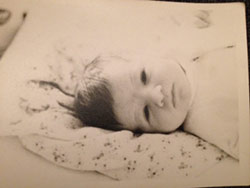
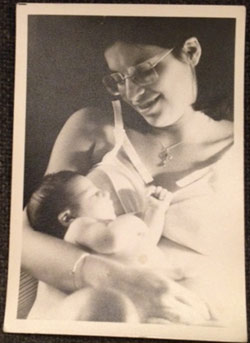
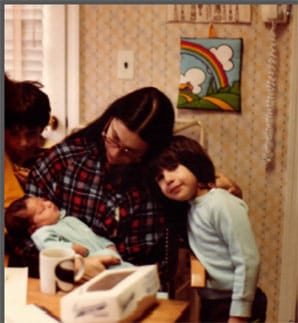
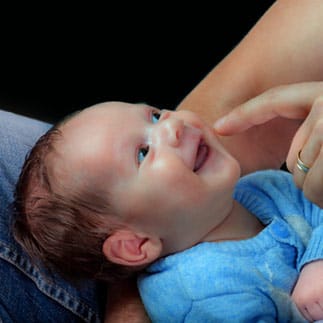
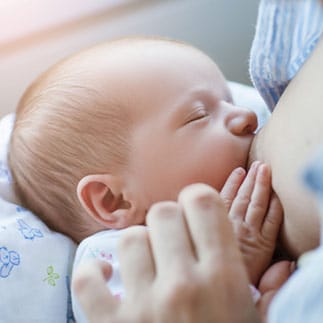
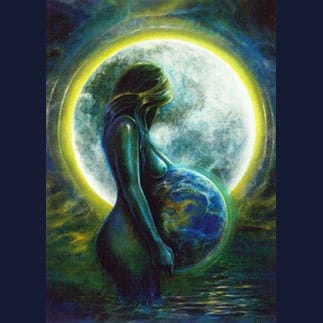

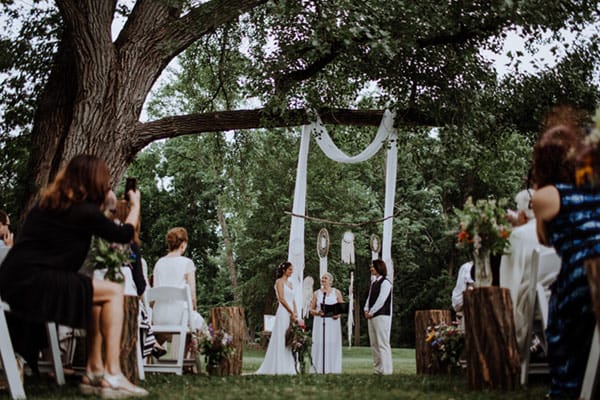
Lovely account and a tribute for Graham’s Birthday. I thoroughly enjoyed reading this and remembering your third and fourth births as well as all 4 of mine! Thanks for sharing this. Big hug.
And now it’s our children who are giving birth to the next generation! We’ve shared many precious moments during our family making days, Elena!
WHAT A WONDERFUL STORY!!! I enjoyed it so much. These are stories to share with other women who are scared of childlbirth. So inspiring!!!
Thanks, Pam. When I worked as a birth educator this was just the way that I taught, through storytelling. Perhaps that’s why my classes were as effective as they were! We all have stories to tell, and my clients’ stories became a vital part of the learning process for others.
Our oldest son, Benjamin, was born a year earlier than your Graham, and I’ve always regretted not getting the bonding time with him that I did with our 2nd son, Walker, born in 83.
And, I didn’t get sore nipples. Ouch!
Thanks,
Edward Thorpe
Lucky you, Edward! Lol! There are many ways to bond,and it happens over time, and I don’t recommend breastfeeding for 90 minutes nonstop!
I SO wanted to have a home birth, but my husband was against it, even thought the hospital was a mere 2 1/2 miles away if we’d had an emergency.
But I still managed to birth a wonderful daughter, in spite of some of the silly hospital rules. (the only problems I had are rare or non-existent in home births)
So glad you had such a wonderful experience to share with us!
And Happy Birthday to Graham 😀
That should read “even though” instead of “even thought”
I appreciate your kind thoughts, Sherry, and I did read it as ‘though’ anyway – how the mind seems to sort those minor typos out! Home birth only works well if both partners are on board for it. Otherwise the anxiety of discomfort can interfere with the process. And as I wrote, sometimes there are rules outside hospital environments to contend with. Thankfully I didn’t get risked out.
Bless you and your family, Diane. And thanks for sharing your experience in details. A true life changing experience indeed which inspired you to your calling, which is ao meaningful. During my second birth, I thought I could do a squatting birth but when in action, my body was just so ‘glued’ to the bed that I didn’t even hv the strength to move. So just birthed in that resting position, comfortably :p
Sounds like we had similar experiences for our second births, Sandy! Your description “my body was just so ‘glued’to the bed that I didn’t even have the strength to move” is a perfect expression of what happened to me too. We do have to listen to our bodies, whatever they decide to do in birth! Many blessings to you.
Hi Diane! Wonderful account of you and family’s experience! Lovely!
Thanks, Kathy! I’m glad you enjoyed it.
I wanted a home birth, but was told no as my daughter was my first (and last!) child. It was an horrific labour (30+ hours) and I don’t remember the birth as I was under general anaesthetic at that point having an emergency cesarean.
It’s odd, perhaps if I had stuck to plan B (hospital, no drugs) instead of being pushed into the “right way”, things may have turned out differently. I know I felt like one in a herd of cattle and rushed along with more drugs than a pharmacy because things weren’t going fast enough. To add insult to injury, I was told on coming round that I had a boy!
Thanks for sharing your story Diane, hopefully it will encourage women to trust their instincts more and go with it!
A very pleasant read, thank you for sharing this 🙂
I find it interesting how some things change over time. I can recall listening to so many memories my parents spoke of over the years and find it incredible how ‘times have changed’. My partner and I had our daughter almost 3 years ago and how she considered a home birth but was talked out of it by friends and family because of the potential complications that could have arose.